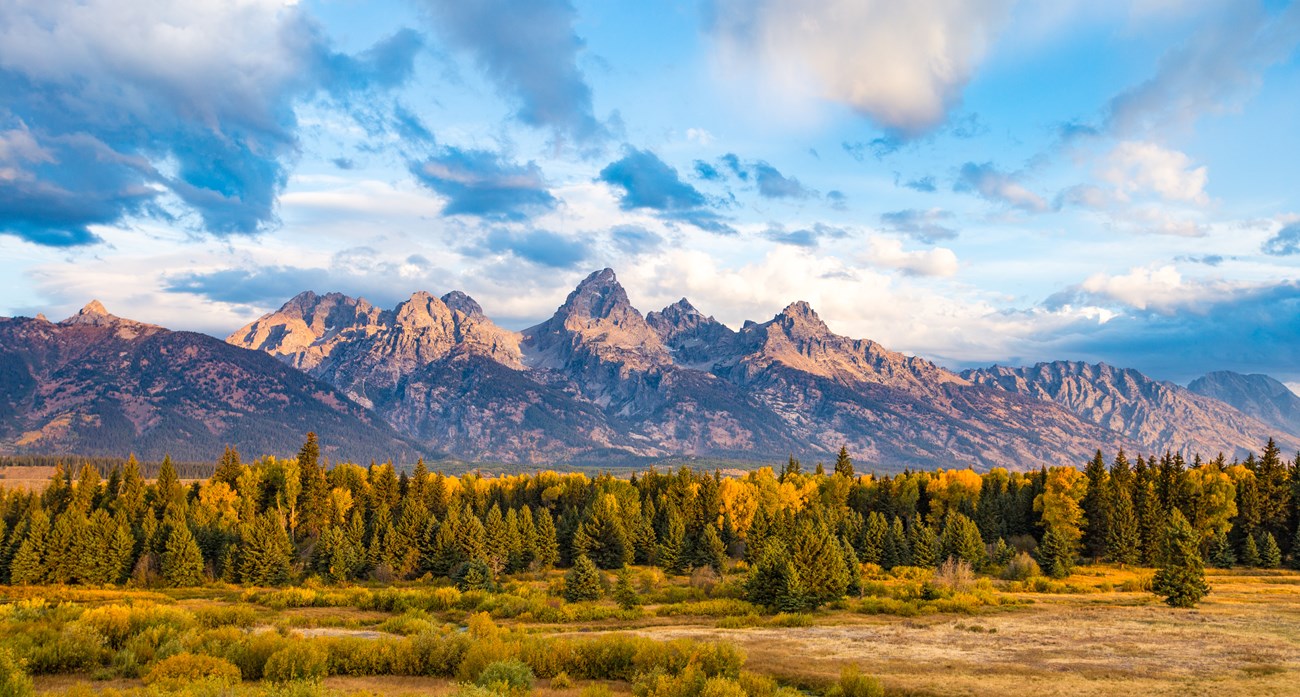
NPS/J.Tobiason The arrival of autumn breathes new life into Grand Teton National Park. As the heat of summer slowly gives way to the cooler months of fall, changes may be seen across the park. The bright green leaves of the aspens become vibrant yellow; the sun, once bright until late in the evening, sinks below the horizon earlier each day; cool breezes and frequent rain showers wash away the haze of summer.
Members of the ungulate family – such as elk, deer, and moose – find their mates during the fall months. Listen for elk bugles in the park—a key sign of fall. Bull elk will gather harems of cow elk, then challenge other males to establish dominance. These challenges include bugling and sparring. Younger bulls will often back off from larger males, but similarly sized bulls will often confront each other. Males use these battles to show their strength, and the bulls often sustain injuries, rarely fatal ones, during the struggle. The strongest male wins and thus earns the right to mate. As snow blows in and fall shifts into winter, elk will continue their migration south to the National Elk Refuge near Jackson, WY, where they will make their winter home. Bison also join in on fall migration. While summers are spent in the eastern sagebrush plains of the park, the coming of fall sees bison head south to lower elevations. Less snow makes it easier to reach the grasses that are their main food source. Bison are experts at using their large heads to plow snow off the ground to reach the grass below. While you travel through Grand Teton, look out for the various animals also making their journey through the park. Fall is a time for movement and change, but will soon ease into the quiet of winter. Take in all the changes around you and breathe in the new energy that comes with the arrival of fall.
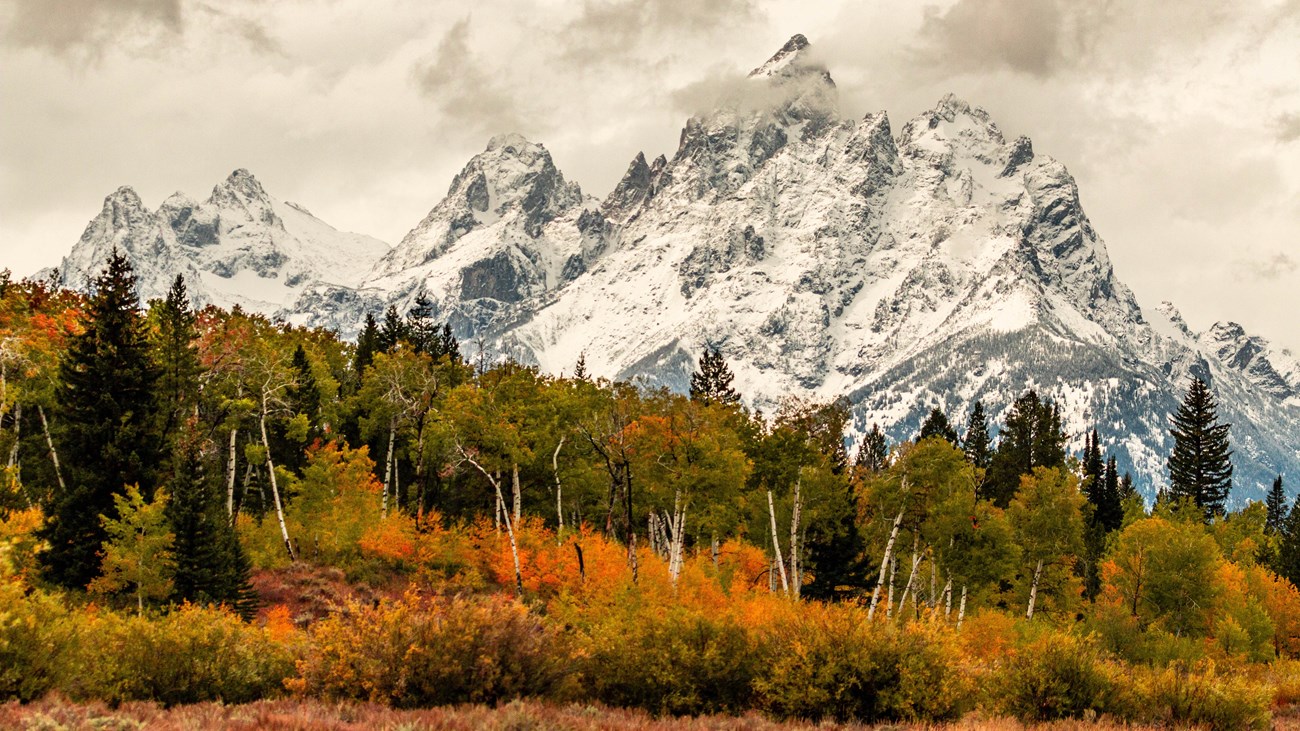
The Science of Color
Learn about fall color in Grand Teton. 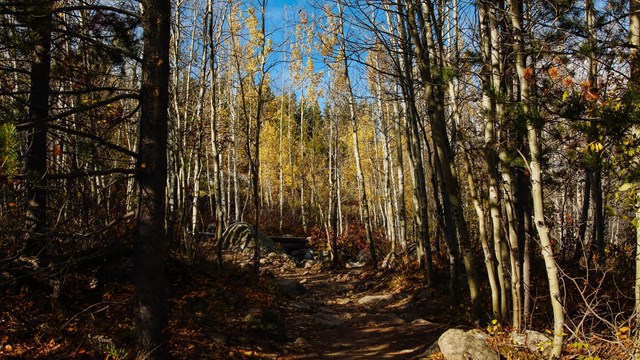
Fall Hikes
Explore the best hikes for fall color. 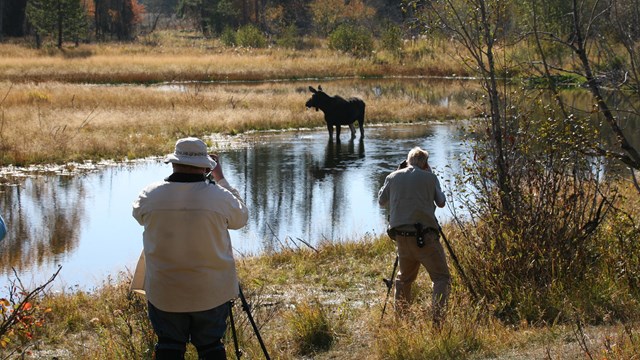
Wildlife Viewing
Learn more about the wildlife in Grand Teton. 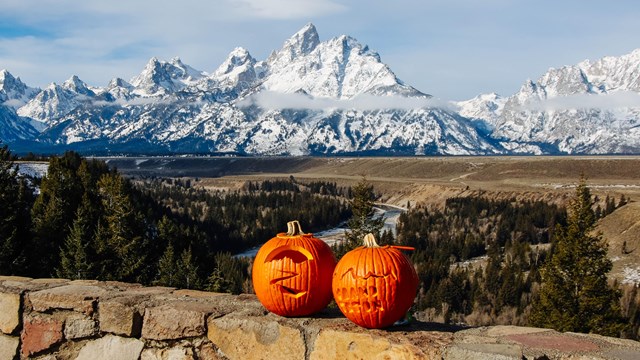
Carve a Pumpkin
Looking to win the neighborhood pumpkin carving contest? Use these carving templates for your pumpkins this year. 
Weather
Learn what weather to expect when you visit Grand Teton. Fall ActivitiesHikingFall is an excellent time to hike in Grand Teton. Trails remain open throughout the park, although accessibility can change due to weather flucuations. Visit our fall hiking page to learn more about trails in the park.Wildlife ViewingWildlife is often very active during fall. Deer species begin their annual rut (breeding season) during this time. Male elk actively bugle to signal their dominance and attract females, an eerie sound that pierces early evenings. You may even witness a sparring match between two dominant male elk - an incredible sight to see. The bull moose in the park are also actively searching for females and may spar for dominance, too. Bears are foraging for berries and any other food source they can find, as they only have a few short weeks left to gain the additional fat they need to survive hibernation. Seeing wildlife in their natural habitat can be an exciting experience. Remember that animals in the park are wild and may react defensively to your presence. Always stay at least 25 yards (75 feet) away from elk, moose, and bison, and 100 yards (300 feet) away from wolf and bear. Visit our wildlife viewing page.Scenic DrivesDriving around Grand Teton offers a prime oportunity to look for wildlife and soak in the spectacular views of the Teton Range. Pullouts throughout the park provide opportunities to stop and look. Roads in the park remain open until November 1, however temporary closures may be put in place due to inclement weather. Visit our road conditions to see what's open and our driving page to discover scenic drives in the park. Practice caution when driving through the park. Follow the posted speed limit and look out for pedestrians, bikers, wildlife, and other vehicles.Safety in the BackcountryFall temperatures can change quickly, fluctuating between cold nights and warm days. Temperatures often drop below freezing at night, and snow storms are common at higher elevations. When headed into the backcountry, hikers and climbers should prepare for changing weather and sudden storms. Hikers and climbers are reminded that their safety is their responsibility. You must rely on your own good judgment, adequate preparation and constant awareness. Backcountry users should be in good physical condition and stick to routes that are within your ability and comfort levels. Traveling alone can be especially dangerous; always give friends or family a detailed itinerary and stick to your plan. Permits are required for all overnight backcountry trips and can be purchased at the Craig Thomas Discovery and Visitor Center and Colter Bay Visitor Center.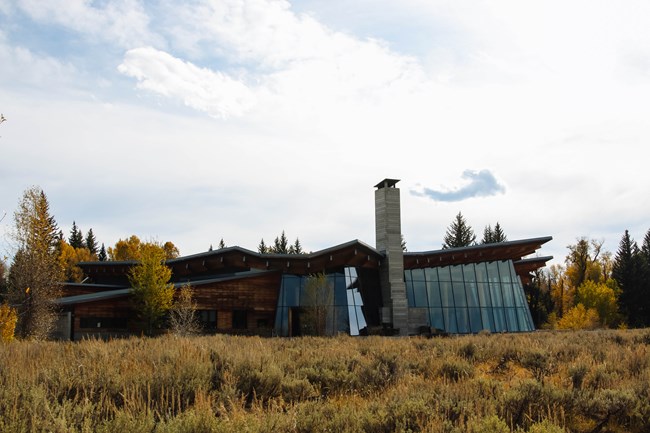
NPS/J. Bonney Fall Visitor CentersPark visitor centers and ranger stations begin to close in September and re-open in March-May. Please see the operating hours page for more information on visitor center seasons of operation.Craig Thomas Discovery and Visitor CenterOpen April through October, hours may varyVisitor information, backcountry permits, gift store, park movie Laurance S. Rockefeller Preserve CenterOpen May through September, hours may varyVisitor information, library, hiking Jenny Lake Visitor CenterOpen May through September, hours may varyVisitor information, gift store, boating, hiking Colter Bay Visitor CenterOpen May to October, hours may varyVisitor information, backcountry permits, gift store, hiking National Elk Refuge and Greater Yellowstone Visitor CenterOpen year round, hours may varyVisitor information, gift store Fall LodgingCampgrounds and lodges begin closing in September and remain closed for the winter season. Visit our operating hours page to see what's open.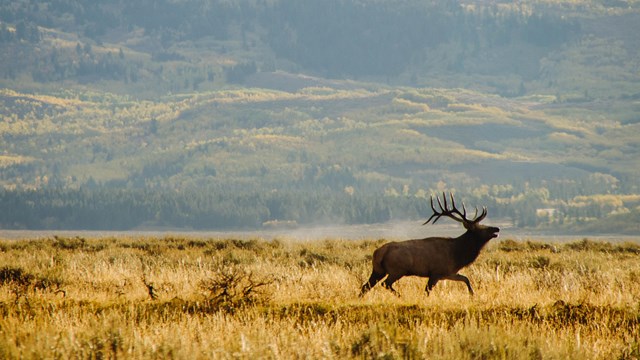
Elk Management Reduction Program
Congress included a provision for managing the elk population through a special annual elk reduction program. 
Operating Hours and Seasons
Learn the hours and seasons for facilities in the park. |
Last updated: December 28, 2022
